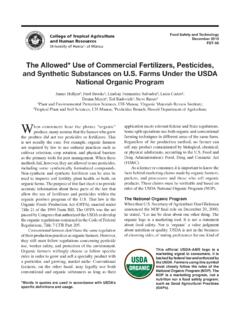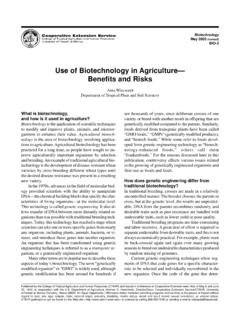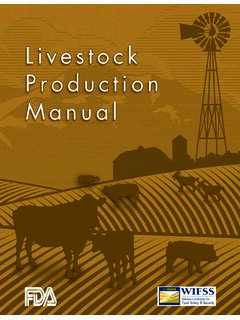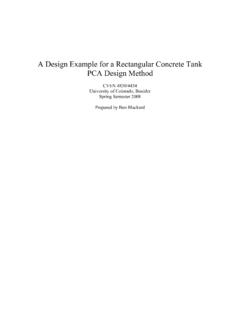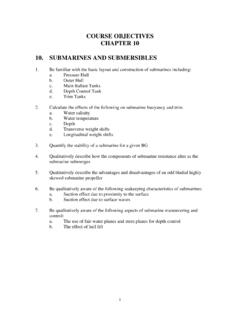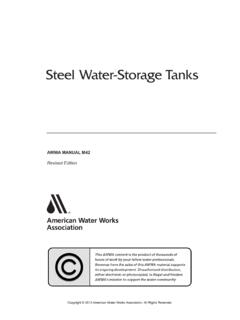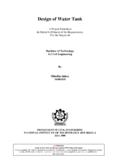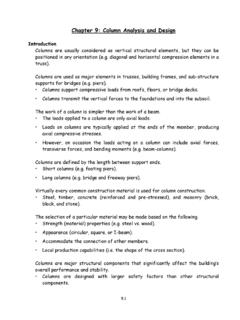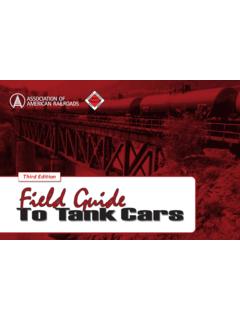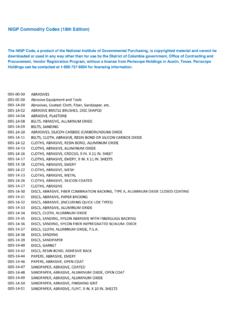Transcription of BANANA RIPENING: PRINCIPLES AND PRACTICE
1 BANANABANANARIPENINGRIPENING: : PRINCIPLES AND PRACTICEPRINCIPLES AND PRACTICEDr. Scot NelsonDr. Scot NelsonPlant PathologistPlant PathologistUniversity of HawaiiUniversity of Outline:Presentation management and field practicesBunch management and field nutritionBanana and handlingHarvesting and diseases and disordersFruit diseases and ripeningForced ripeningPRODUCING A CONSITENT BANANA OF HIGH QUALITYPRODUCING A CONSITENT BANANA OF HIGH QUALITYEFFICIENTLY, WITHOUT WASTEEFFICIENTLY, WITHOUT WASTET hree Phases:Three Phases:BUNCH MANGEMENT & FIELD PRACTICESBUNCH MANGEMENT & FIELD PRACTICESHARVESTING AND HANDLINGHARVESTING AND HANDLINGFORCED RIPENING AND MARKETINGFORCED RIPENING AND MARKETINGF ruit Fruit diseases diseases and and disorders,disorders,plant plant nutritionnutritionBest bunch management practices: Best bunch management practices.
2 Quality control from the field to the shelfquality control from the field to the shelf Field practicesField practices::yyLeaf removal (diseased leaves, sanitation)Leaf removal (diseased leaves, sanitation)yyDeflowering (of individual fingers)Deflowering (of individual fingers)yyBunch spray (to reduce insect and mold)Bunch spray (to reduce insect and mold)yyBagging and Tagging Bagging and Tagging yyOnOn--time harvesttime harvestyyCareful handling & transport to packing houseCareful handling & transport to packing housePacking house practicesPacking house practices::yyGood packing house hygiene Good packing house hygiene yyHang bunches in shade over night to coolHang bunches in shade over night to coolyyCareful deCareful de--handing (clean cuts)handing (clean cuts)yyWashing Washing yyDryingDryingyyPackingPackingyyStorage (refrigerated), shipping (prompt)Bunch of bananasBunch of bananasStorage (refrigerated), shipping (prompt) BANANA Bunch management in the FIELDB anana Bunch management in the FIELD::;;Leaf removalLeaf removal::minimizes fruit injuryminimizes fruit injuryRemove leaves that rub against bunchesRemove leaves that rub against bunchesRemove severely diseased leaves (deRemove severely diseased leaves (de--trashing)trashing);;DefloweringDefl owering::reduces incidence of fungus and insect attack; reduces reduces incidence of fungus and insect attack.
3 Reduces abrasion injury on fruit injury on fruit skin.;;Bunch sprayBunch spray((diazinondiazinon, insecticidal soap, BT, copper hydroxide): , insecticidal soap, BT, copper hydroxide): reduces pest and disease damage (moth, thrips, sooty mold, etc.)reduces pest and disease damage (moth, thrips, sooty mold, etc.);;Field sanitationField sanitation::reduces insect and pathogen populationsreduces insect and pathogen populations;;Bagging and TaggingBagging and Tagging::protects bunch; ensures onprotects bunch; ensures on--time harvest of time harvest of cohortscohorts;;Good cultural practicesGood cultural practices(weed, pest, disease management, drainage, (weed, pest, disease management, drainage, fertility, pruning, plant spacing, etc): ensures healthy, consisfertility, pruning, plant spacing, etc): ensures healthy, consistent fruittent fruit.
4 Careful harvesting, handling & transport to packing houseCareful harvesting, handling & transport to packing house::minimizes minimizes fruit injury and injury and flowers are plucked twice per weekFemale flowers are plucked twice per weekEach bunch is plucked 1 Each bunch is plucked 1--2 times2 timesFlowers are plucked soon after they open up, Flowers are plucked soon after they open up, while they are still they are still : ladder, gloves: ladder, glovesAfter plucking is complete, male flower is cut After plucking is complete, male flower is cut off & bunch is sprayed and bagged & tagged off & bunch is sprayed and bagged & tagged with colored colored and TaggingBagging and TaggingBagging is done once per weekBagging is done once per weekPerforated polyethylene sleevesPerforated polyethylene sleevesTied at top and bottomTied at top and bottomTagged with biTagged with bi--colored ribbon colored ribbon Bagging minimizes sooty mold, Bagging minimizes sooty mold.
5 Insect damage and abrasion injury insect damage and abrasion injury to bunch sleeve manufacturer informationBanana bunch sleeve manufacturer informationIdentify plants at critical stage of development Identify plants at critical stage of development and mark the pseudostem with the dateand mark the pseudostem with the dateA simple alternative to Bagging and TaggingA simple alternative to Bagging and TaggingGood cultural practicesGood cultural practicesPruningPruningon a regular basis removes on a regular basis removes unwanted or suckers, keepsunwanted or suckers, keepsproduction mats in optimum production mats in optimum condition, saves fertilizer, reduces condition, saves fertilizer, reduces pest and diseasepest and diseasePruned Pruned fieldefieldeBanana nutrition in Hawaii BANANA nutrition in Hawaii Nutrient Cycle for BananasNutrient Cycle for BananasFrom: Laha, E.
6 , and Turner, 1989. BANANA Nutrition. International Potash institute Worblaufen-Bern, partitioning in BananasNutrient partitioning in BananasFrom: Laha, E., and Turner, 1989. BANANA Nutrition. International Potash institute Worblaufen-Bern, requirements for highElement requirements for high--production BANANA farming in Hawaiiproduction BANANA farming in HawaiiElementElementPounds per acre per yearPounds per acre per yearNitrogenNitrogen300 300 --650 650 PhosphorousPhosphorous60 60 --120 120 PotassiumPotassium600 600 --700700 Primary fertilizer sourcesPrimary fertilizer sources:: BANANA specialBanana special 1313--33--37 (general N37 (general N--PP--K fertilizer) K fertilizer) about 200 lbs/acre/monthabout 200 lbs/acre/monthUrea (sulfurUrea (sulfur--coated or polycoated or poly--coated) (N)coated) (N)Potash, KSO or Potash, KSO or KClKCl(K)(K)Lime, dolomite (Ca) Lime, dolomite (Ca) fields limed to pH fields limed to pH up to twice per up to twice per yearBorax (B)Borax (B)Zinc sulfate (Zn) Zinc sulfate (Zn) Sulfur (S)Sulfur (S) BANANA specialBanana special 1313--33--3737 Crop logging program for BANANA (Hawaii)Crop logging program for BANANA (Hawaii)
7 Crop logging is the monitoring of soil and BANANA tissue data ovCrop logging is the monitoring of soil and BANANA tissue data over a period of time to help the er a period of time to help the grower make better decisions on the type, rate, and interval of grower make better decisions on the type, rate, and interval of fertilizer (suggested)Range (suggested) 50 100 100 ppmppmMANGANESEMANGANESEMnMn30 30 100 100 ppmppmCOPPERCOPPERCuCu10 10 15 15 ppmppmZINCZINCZnZn25 25 40 40 ppmppmBORONBORONBB15 15 25 25 ppmppmRecommended levels of elements in BANANA leaf tissue in HawaiiRecommended levels of elements in BANANA leaf tissue in leaf tissue sampling in Hawaii for nutrient analysisFrom: Laha, E., and Turner, 1989. BANANA Nutrition. International Potash institute Worblaufen-Bern, : Laha, E., and Turner, 1989.
8 BANANA Nutrition. International Potash institute Worblaufen-Bern, of crop logging:Advantages of crop logging:--Quantitative basis for decision makingQuantitative basis for decision making--Early detection of problemsEarly detection of problems--Verification of suspected problems and interactionsVerification of suspected problems and interactions--Improved yield and qualityImproved yield and quality--Optimum fertilizer use patternsOptimum fertilizer use patternsNutrient imbalance symptoms for bananaNutrient imbalance symptoms for bananaDeficient elementSymptomsNotesNitrogenGeneralized chlorosis (more yellowing on older leaves); rose-colored tints on petioles and leaf sheaths; stunting; rosetting; slender pseudostem; small petioles and leaves; reduced life span of leaves; notable reduction in is more sensitive to a lack of nitrogen than any other element.
9 Problem is compounded by dense stands of weeds or yellowing of oldest leaves which then turn orange and dry up; leaves become tattered and fold downward; crumpled leaves; poorly filled bunchResponds well to potash applicationsMagnesiumMarginal chlorosis of lowest leaves; violet-colored marbling of petioles; fruit may have defective flavor and not ship sulphate can alleviate the dwarfing; reduced leaf length; reduced rate of leaf emission; leaves are undulated; tissue near midrib thickens, may turn reddish-brownFields should be limes periodically; calcium nitrate can help to correct this interveinal chlorosis of young leaves; retarded plant growth; small bunchesApply iron compounds to soil; foliar sprays of iron compounds can relieve symptoms and stunting; chlorotic, strap-shaped leaves; leaf chlorosis ion stripes or patches; abnormal bunch and hand characteristicsProblem may be more severe in sandier are chlorotic and reduced in size with a thickening of secondary veins; undulating leaf edges; necrosis along edge of lower leavesSulphate fertilizers can correct this problem ( , ammonium sulphate, potassium sulphate and magnesium sulphate)BoronChlorotic streaking oriented perpendicular to and crossing the primary veins; leaf malformation; interveinal chlorosisDeficiency can develop over time in mature BANANA fields in HawaiiReference: Stover, 1972.
10 BANANA , plantain and abaca diseases. Commonwealth Mycological institute , Kew, Surrey, England. 316 Nitrogen (N) deficiencyPotassium (K) deficiencyPotassium (K) deficiencyPotassium (K) deficiencyCalcium (Ca) deficiencyPotassium (K) deficiency-Orange necrotic lamina of older leaves-Leaf curling and dsiccation- Choke-throat suckerNitrogen (N) deficiency-Pale green leaves, pink-reddish petiolesCalcium (Ca) deficiency- Spike leaf Laha, E., and Turner, 1989. BANANA Nutrition. International Potash institute Worblaufen-Bern, (Ca) deficiency- Spike leaf Calcium (Ca) deficiency-Unthrifty plant growth-Faint chlorotic yellow stripes parallel to leaf veinsCalcium (Ca) deficiency-collapsed cigar leaf, lack of green pigmentation, burned (necrotic) tip of cigar leafZinc (Zn) deficiencyZinc (Zn) deficiencyPotassium (K) deficiencyManganese (Mn) toxicityManganese (Mn) toxicity-Marginal nerosisfrom fungicide spray (above) or soil (below)Potassium (K) deficiency-Bunch failure to fillZinc (Zn) deficiency-Anthocyaninpigmentation on underside of lamina of fully mature leaves (left)-Alternating chlorotic stripes (right)From: Laha, E.





